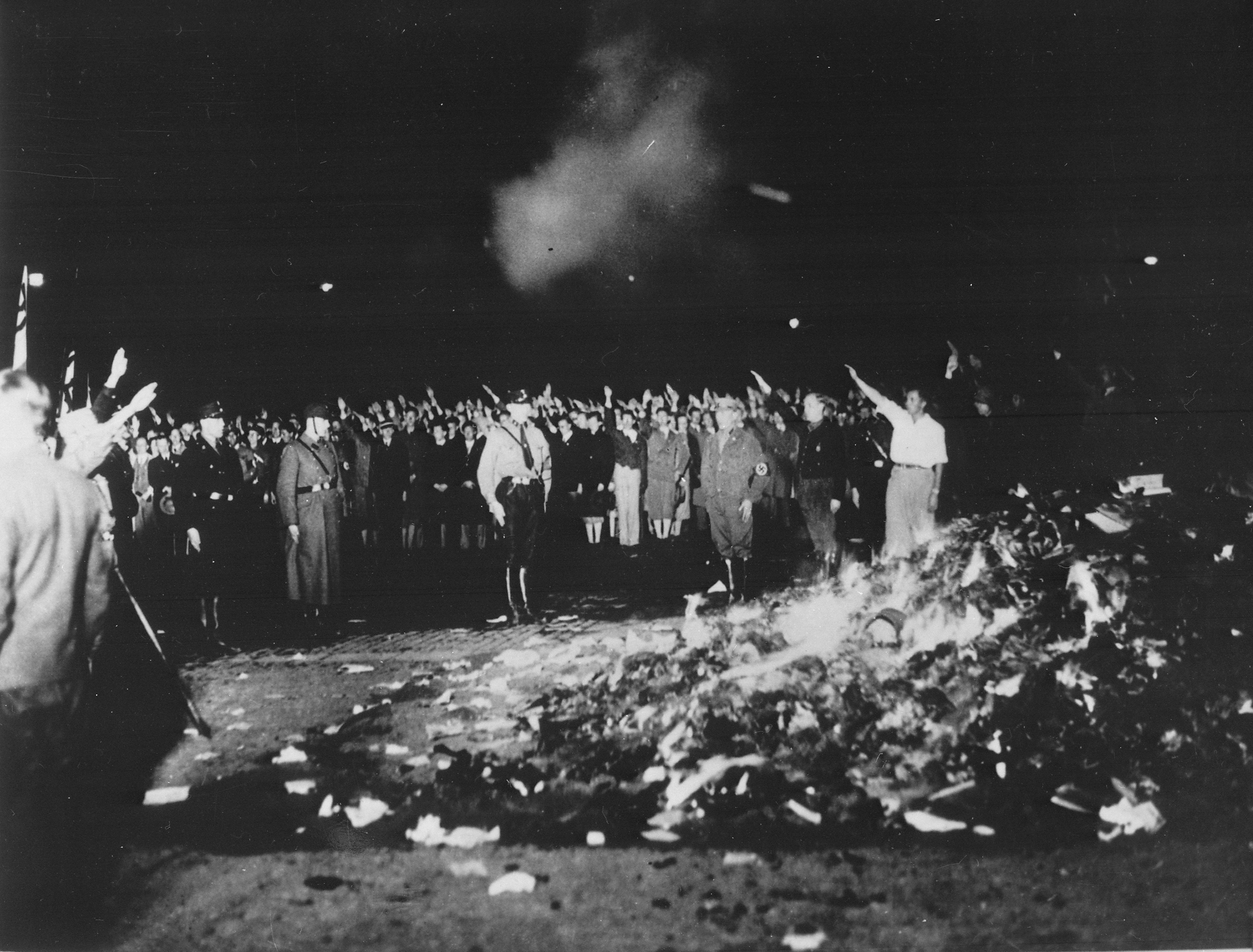
Berlin Book Burning circa 1933 courtesy
http://www.dw.com/en/cultural-incineration-80-years-since-nazi-book-burnings/a-16798958
http://www.dw.com/en/cultural-incineration-80-years-since-nazi-book-burnings/a-16798958

"Stairs of Death" at Mauthausen courtesy https://www.pinterest.com/pin/325736985526835210/.
A pile of shoes sits in another case, turned green from years of exposure to the elements. A rubber smell permeates the air. Despair permeates the soul. These are the shoes of thousands of Jews who worked at Majdanek, a Nazi concentration camp. Despite their number, these shoes are just a drop in the bucket. A map shows us that Majdanek was one of hundreds of Nazi interment camps, work camps and death camps by running by the end of World War II. Hitler took their ideas, their belongings and their lives. But he could not take their spirits.

Piles of shoes worn by Jewish victims of Holocaust courtesy www.jewishjournal.com.
We walked past a small wooden boat, one of dozens used to transport Jews across the water from Denmark to Sweden during World War II. Thanks to this evacuation, nine out of ten Danish Jews survived the war. But sadly, Poland's 3 million Jews were reduced to 45,000 by the Holocaust. By war's end, two thirds of Europe's Jews had been murdered.
Later, as we walked down Washington's 12th Avenue to dinner at the Elephant and the Castle, we ran into a women from our tour group. We mentioned we had just visited the Holocaust Museum. She said that she would not visit it because she did not want to see "man's inhumanity to man". I thought to myself that she had hit the nail on the head with that statement. Although the Holocaust happened decades ago, it could happen again -- with different players. Let us never forget.
No comments:
Post a Comment